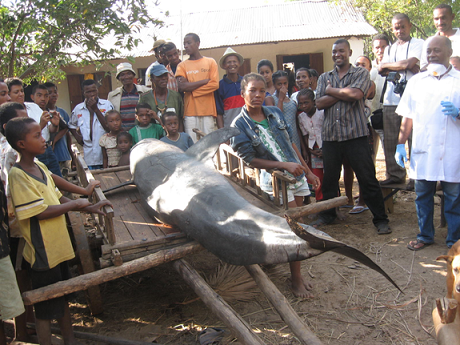Subjects: Optical, Asteroid, Near-Earth Object
During the observations of flaring blazar 3C 454.3 in two polarization filters, MASTER-Tunka robotic telescope (double 0.40-m f2.5 reflector + 4kx4k CCD, filed of view 2.1x2.1 deg) has serendipitously detected the Fast Moving Object of 16m visible in both tubes. The object was located near the edge of FOV, about 1 deg south of 3C 454.3. First it was detected on the set of ten 30-sec exposures from 13:20 to 13:37 UT with limiting magnitudes 17.3-17.5. Another set of ten 60-sec exposures was then obtained from 13:44 to 14:05 UT with the limits 18.1-18.2 in both tubes.
The animation of ten 60-sec exposures from the Eastern tube is uploaded here.
The object was moving at the rate of 6.2" per minute in positional angle 71. Astrometry from 8 images was reported to Minor Planet Center using the designation MASD91. Using Find_Orb orbit determination software by Bill Gray (www.projectpluto.com) we have obtained the following orbital elements:
Epoch 2013 Sep 28.0 TT = JDT 2456563.5 Earth MOID: 0.0000 Ve: 0.0772 M 343.67888 (2000.0) Ma: 0.0016 n 0.36126837 Peri. 252.01974 0.22930384 -0.97326783 a 1.95246273 Node 184.78142 0.94166328 0.22520304 e 0.6228503 Incl. 8.98491 0.24635343 0.04509218 P 2.73/996.47d H 27.7 G 0.15 q 0.73637071 Q 3.16855475 From 8 observations 2013 Sept. 27 (44.4 min); mean residual 0".295.










Comment: See also:
Rupert Sheldrake: the 'heretic' at odds with scientific dogma
Sadly, with the Big Lie about 'man-made global warming' more entrenched than ever, we see no signs that Science is breaking free from the clutches of Power.
The Global Situation Has Taken a Turn For the Worse: Recovery Unlikely
From 'Hiding the Decline' to 'Burying the Pause': Man-made Global Warming is still a lie